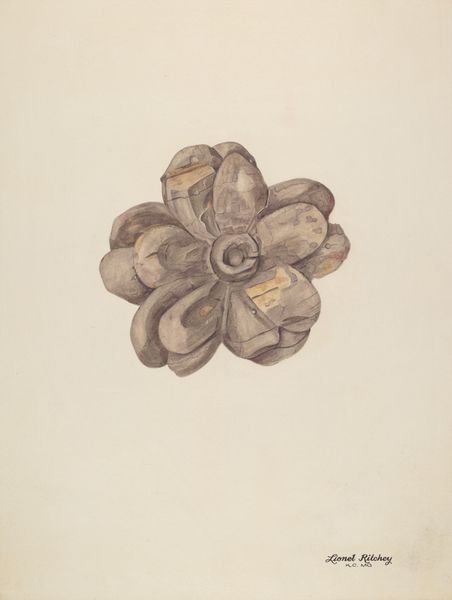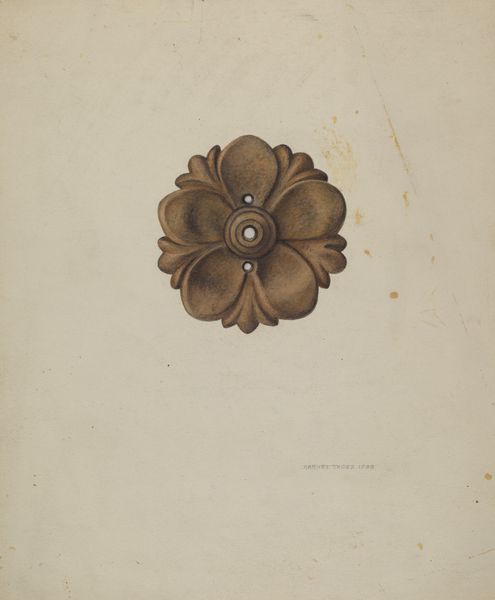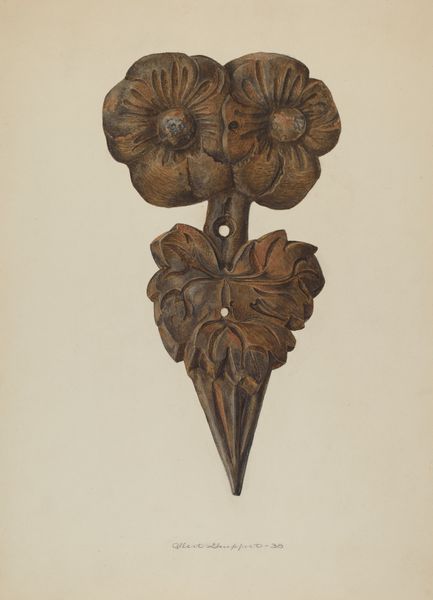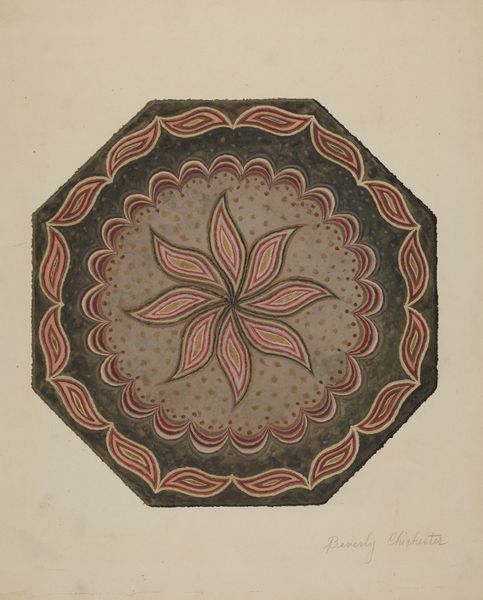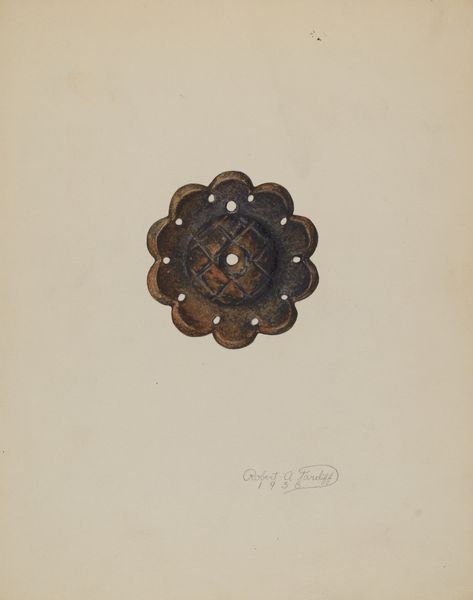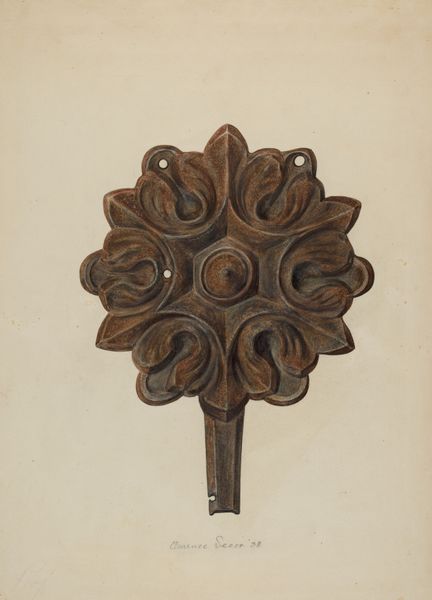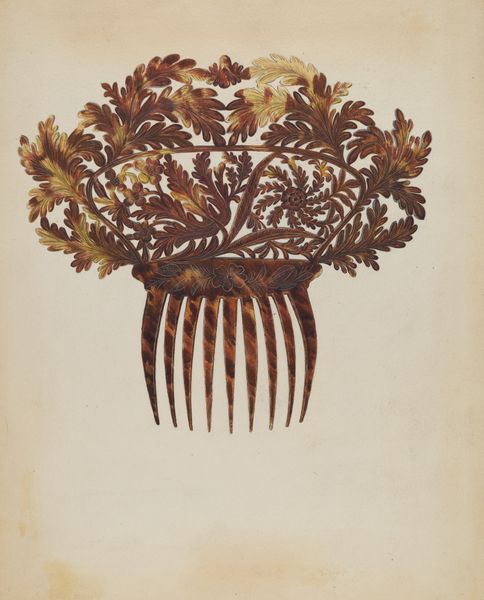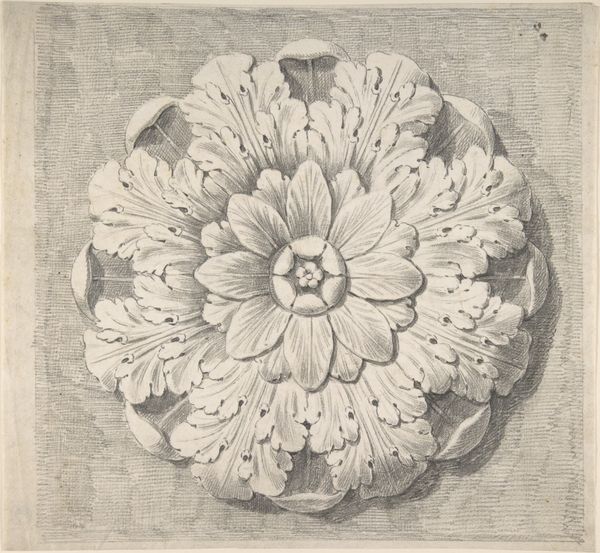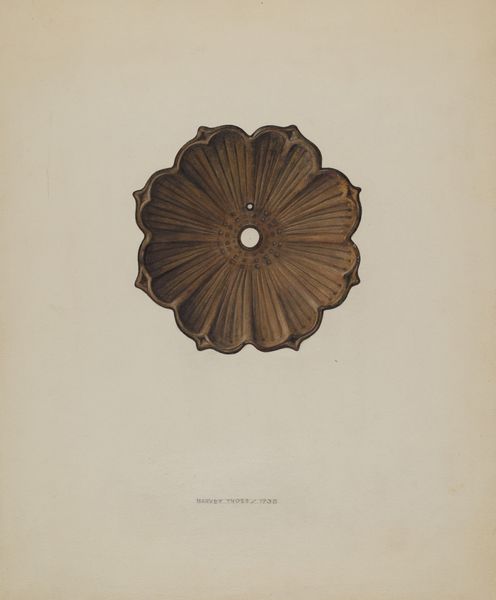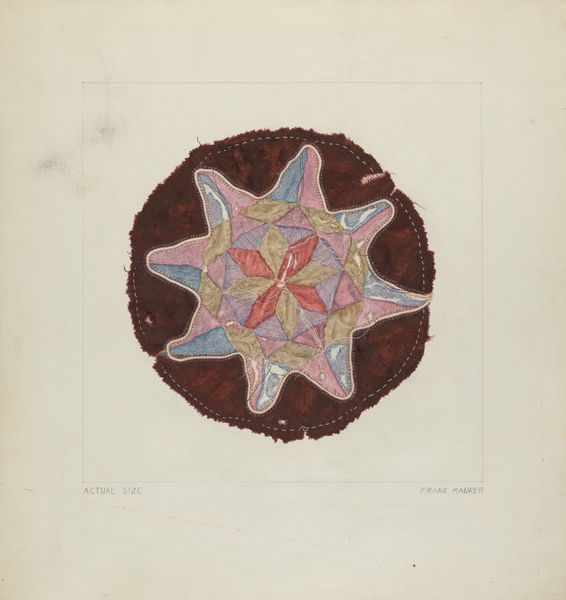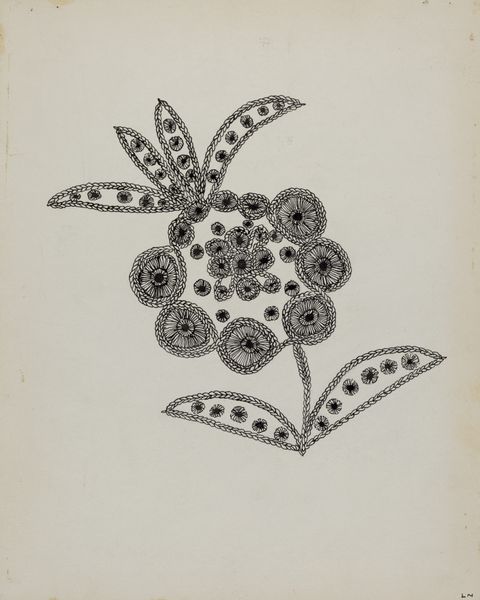
drawing, watercolor
#
drawing
#
watercolor
#
watercolour illustration
#
watercolor
Dimensions: overall: 30.9 x 23 cm (12 3/16 x 9 1/16 in.) Original IAD Object: 5 3/4" in diameter
Copyright: National Gallery of Art: CC0 1.0
Curator: Right, so this watercolor and drawing is titled "Wood Carving - Flower," created by Clayton Clements around 1939. It looks like the flower's petals or rather, the wood that is carved into the shape of petals, encircles a centre which displays an elaborate, geometric mesh of some kind. Editor: Mmm, my initial feeling? A quiet, aged beauty, something dignified and perhaps a bit melancholic. The colour palette feels muted, and the rendering of the wooden textures really draws me in. Is it just me or does the colour scheme remind anyone else of a sepia photo? Curator: The piece seems to be a rendering of something practical. Wood carving wasn't a medium which was held to a high regard during its peak and I think that adds to your sense of age that the piece conveys. You can just imagine it sitting in someone's workroom, unceremoniously hanging on the wall or otherwise decorating the workspace without attracting much, if any, attention to itself. This sort of thing would've been commonplace, you see? It gives us a look into Clements’s everyday world. Editor: Absolutely! And while not exactly arresting as a spectacle, I would hazard that its value resides more so in its function as a record, as well as the sense of texture that it captures as the drawing is trying to recreate the medium of the work which it seeks to emulate: wood. It reminds me of exercises that are performed by students! What's more to unpack with the texture you mentioned, by the way? Curator: Note how each of those 'petals' curve in such a way to indicate shadow; Clements truly conveys form in those simple curves. The way that this is rendered is so convincing! I'm tempted to reach out and actually touch it. You’d be remiss to suggest it's just a mere practice piece by someone simply going through the motions! Editor: Well, now I’m seeing it. Clements offers us a chance to see the overlooked, to give worth to what is dismissed as simple, and this challenges conventional aesthetic ideas within institutional contexts of fine art; to display even craft this way would surely challenge some perceptions about "proper" art. Very subtly, Clements’s artwork implies a sort of political act in questioning what is given value, then. Curator: Beautifully said, just perfectly so! I find that his gentle observation encourages us to value craft, in whatever form. Editor: Agreed, that rings very true, it's certainly food for thought as to the wider societal perceptions regarding what constitutes art itself!
Comments
No comments
Be the first to comment and join the conversation on the ultimate creative platform.
